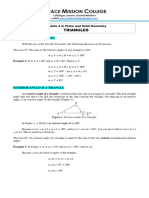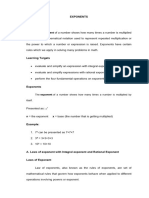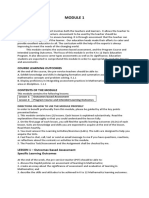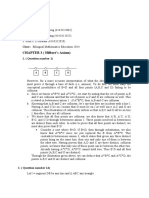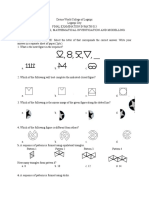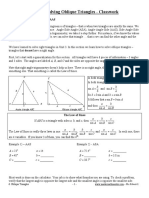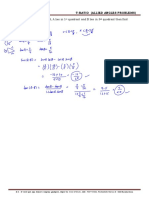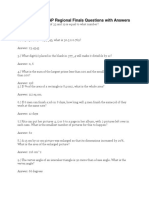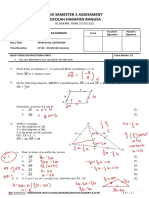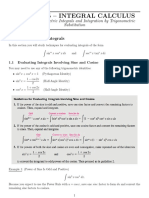100% found this document useful (1 vote)
493 views8 pagesPlane and Solid Geometry Module 3
The document discusses right triangles and the geometric mean. It contains the following key points:
1) The geometric mean of two positive values a and b is the number x such that a/x = x/b.
2) An altitude drawn to the hypotenuse of a right triangle divides it into two similar right triangles.
3) The Pythagorean theorem states that for any right triangle, the square of the hypotenuse is equal to the sum of the squares of the two legs.
Uploaded by
Rose Marie Grimarin FajutraoCopyright
© © All Rights Reserved
We take content rights seriously. If you suspect this is your content, claim it here.
Available Formats
Download as PDF, TXT or read online on Scribd
100% found this document useful (1 vote)
493 views8 pagesPlane and Solid Geometry Module 3
The document discusses right triangles and the geometric mean. It contains the following key points:
1) The geometric mean of two positive values a and b is the number x such that a/x = x/b.
2) An altitude drawn to the hypotenuse of a right triangle divides it into two similar right triangles.
3) The Pythagorean theorem states that for any right triangle, the square of the hypotenuse is equal to the sum of the squares of the two legs.
Uploaded by
Rose Marie Grimarin FajutraoCopyright
© © All Rights Reserved
We take content rights seriously. If you suspect this is your content, claim it here.
Available Formats
Download as PDF, TXT or read online on Scribd
/ 8
